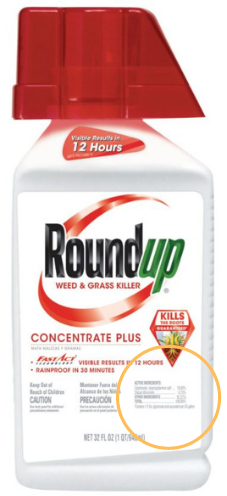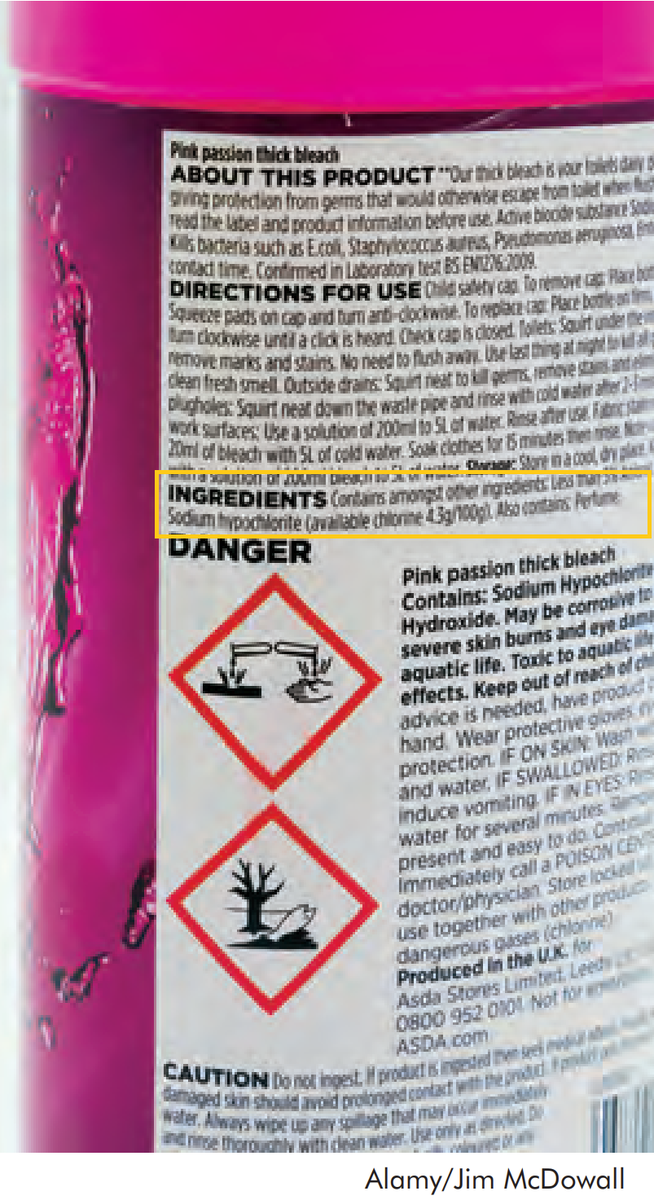Gateway on Pesticide Hazards and Safe Pest Management
How To Find Ingredients in Pesticide Products
Beyond Pesticides offers resources below to evaluate the health and ecological effects of specific chemical exposure from ACTIVE INGREDIENTS in pesticide products, as well as regulatory information and supporting scientific documents. Because various pesticide products can contain more than one active ingredient, it is important to READ the LABEL to determine chemical components.
With 192 different active ingredients and counting, it is essential to establish the connection between the use of these chemicals and their respective hazards.
View the step-by-step guide on how to search for the active ingredient(s) in pesticide products below:
- Go to U.S. EPA's Pesticide Product and Label System and enter the product name. The generic product name may vary.
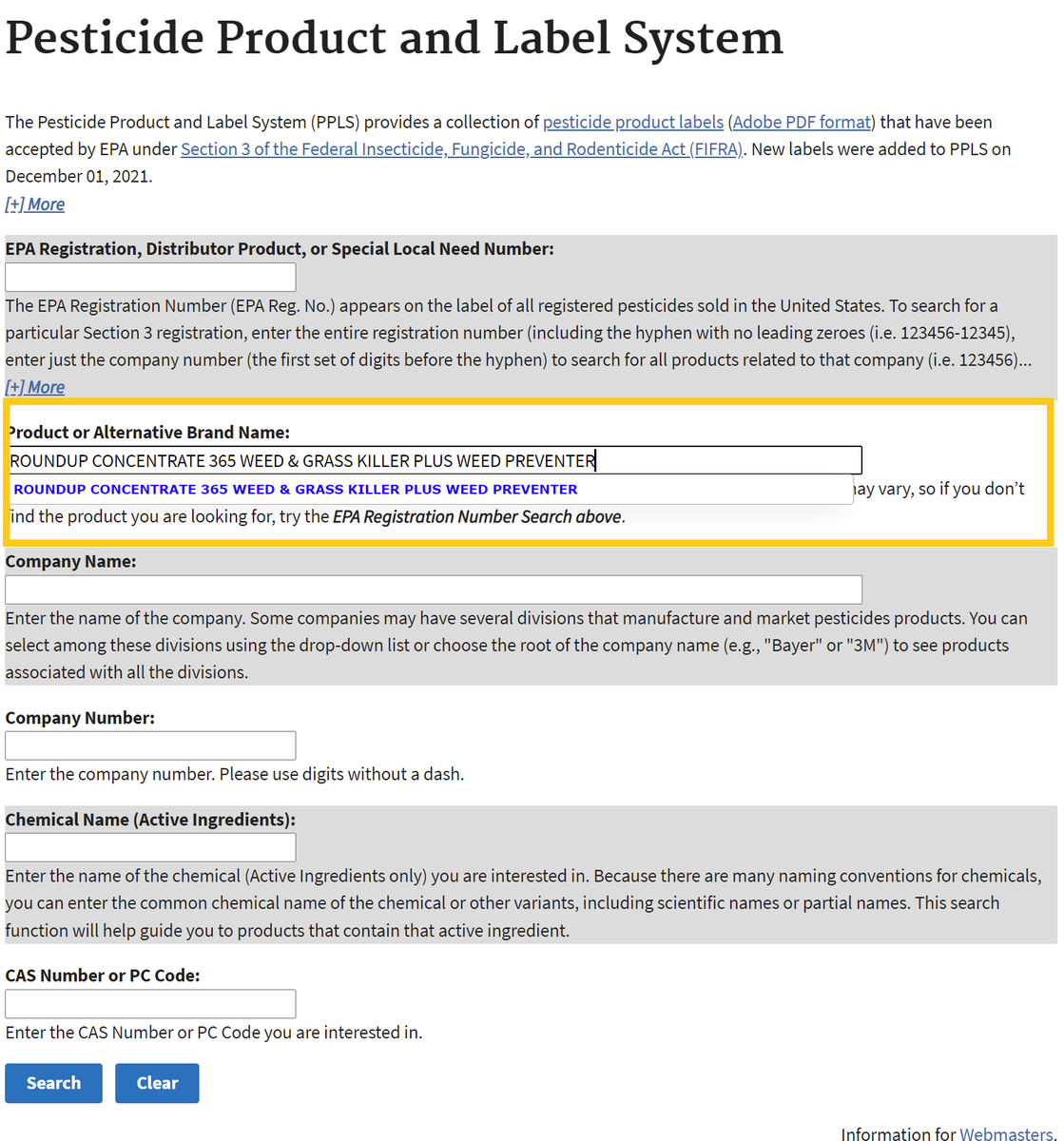
- After searching, click on the chemical ingredients tab or the link for the most recent label to find Active Ingredients.
Chemical List Label List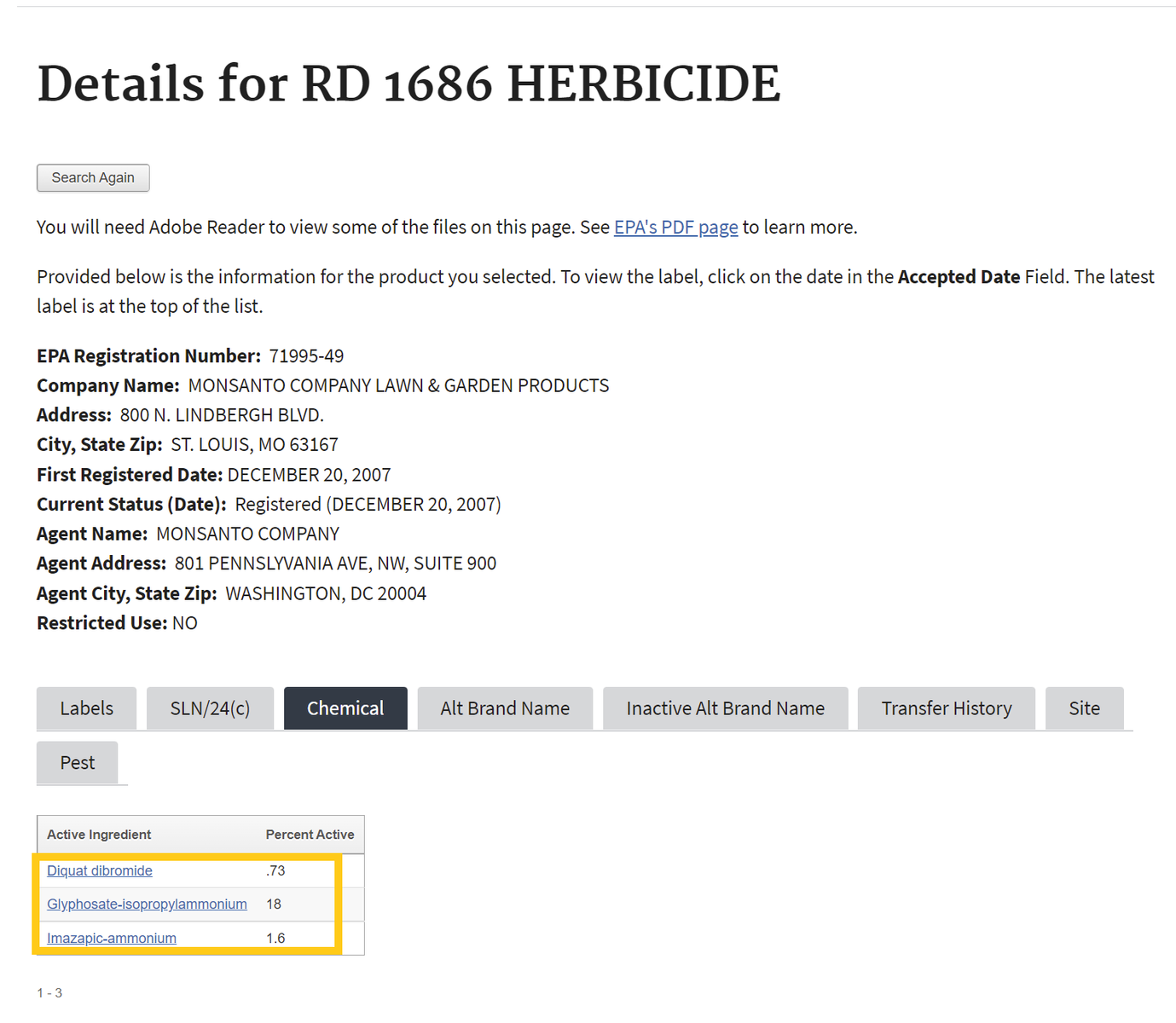
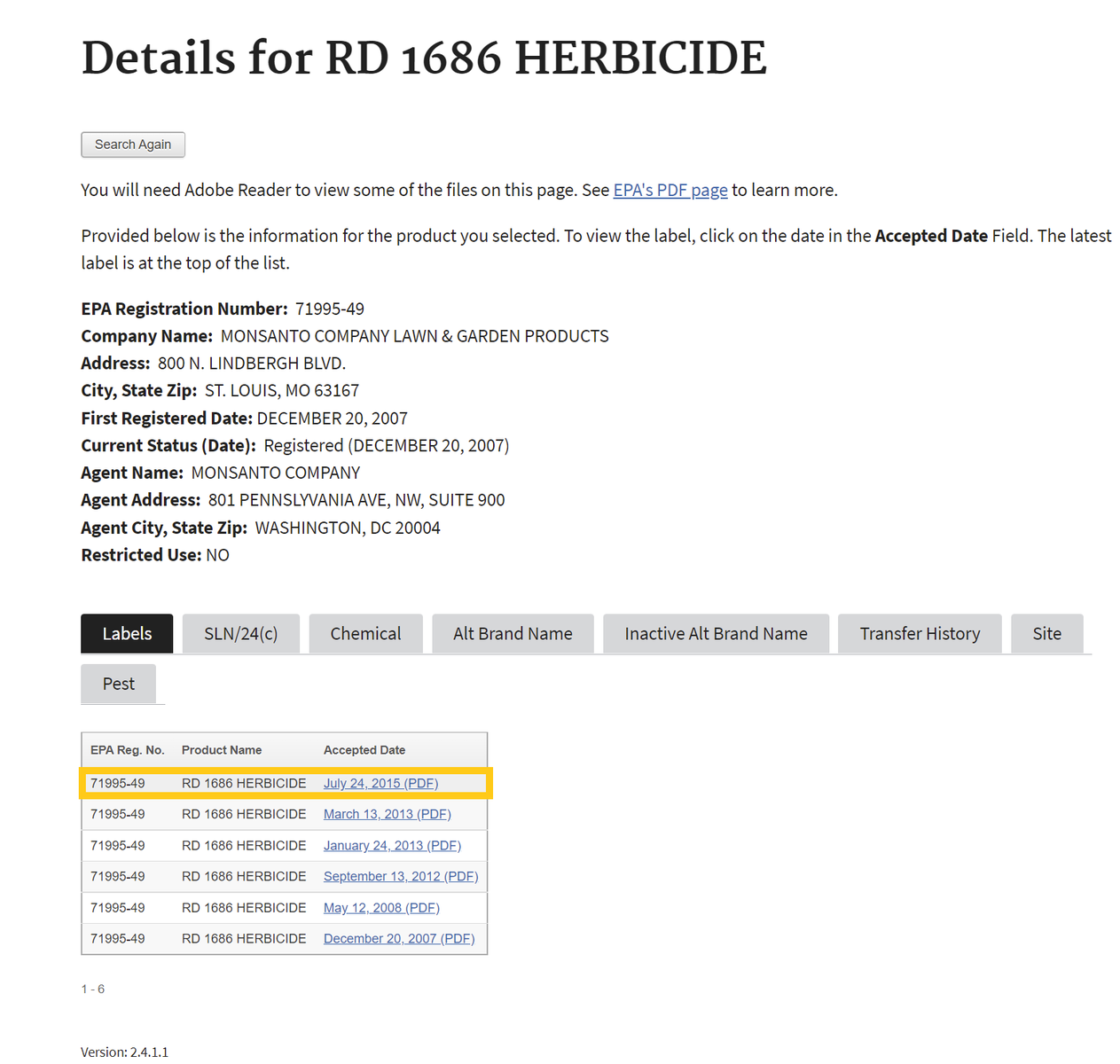
If one selects the chemical ingredients tab, skip to Step 4 . If not, proceed to step number 3 - To find the active ingredient(s) on the label, search for the page in the document containing the date of registration. Usually, the active ingredients section occurs within the first few pages of the label document.
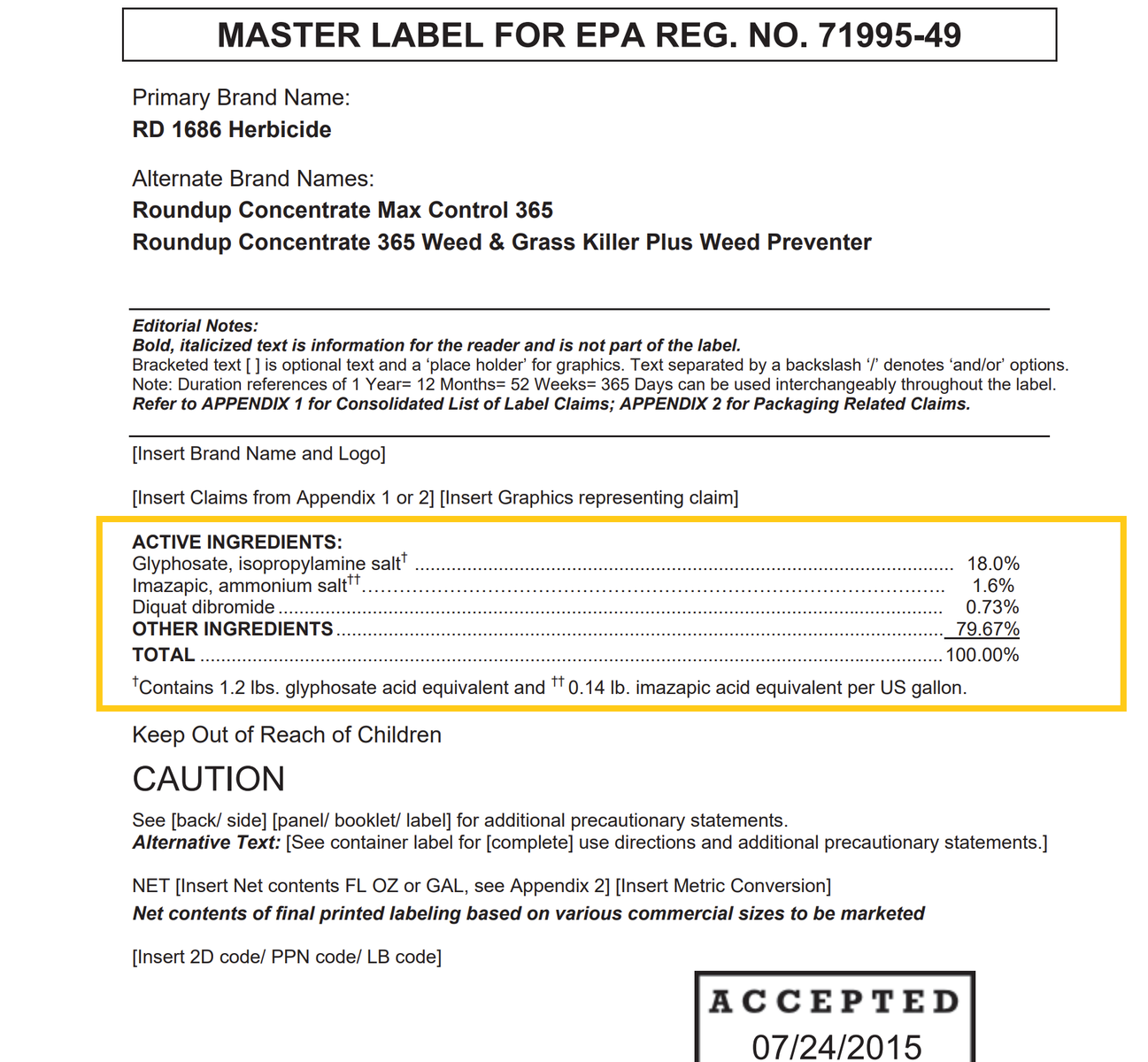
- Return to the Beyond Pesticides Gateway and search for the active ingredient name in the yellow box to the right or from the list below.
Lambda-cyhalothrin
General Information
- Product Names:
- Chemical Class: Synthetic pyrethroid insecticide
- Uses: Agriculture, residential, mosquitoes
- Alternatives: Organic agriculture, Least toxic residential products, Least toxic mosquito products
- Beyond Pesticides rating: Toxic
Health and Environmental Effects
- Cancer: Not documented
- Endocrine Disruption: Yes (36)
- Reproductive Effects: Not documented
- Neurotoxicity: Yes (4)
- Kidney/Liver Damage: Not documented
- Sensitizer/ Irritant: Yes (4)
- Birth/Developmental: Not documented
- Detected in Groundwater: Not documented
- Potential Leacher: Not documented
- Toxic to Birds: Not documented
- Toxic to Fish/Aquatic Organisms: Yes (4)
- Toxic to Bees: Yes (4, 43)
Residential Uses as Found in the ManageSafe™ Database
- Bagworms
- Bed Bugs
- Carpenter Bees
- Centipedes
- Chiggers
- Chinch Bugs
- Gypsy Moths
- Spiders
- Carpenter Ants
- Grubs
- Ticks
- Wasps and Yellowjackets
Additional Information
- Regulatory Status:
- Supporting information:
- NPIC Factsheet (National Pesticide Information Center)
- Asthma, Children and Pesticides (Beyond Pesticides)
- Children & Lawn Chemicals Don't Mix (Beyond Pesticides)
- The Safer Choice (Beyond Pesticides)
- Extoxnet Pesticide Factsheet (Extension Toxicology Network)
- PAN Pesticides Database: Cyhalothrin, Lambda (Pesticide Action Network)
- Studies:
- Use and Toxicity of Pyrethroid Pesticides in the Central Valley,California, USA. Amweg, E. et. al. 2004.Environmental Toxicology and Chemistry 24(4):966-972
- Indoor spraying with the pyrethroid insecticide lambda-cyhalothrin: effects on spraymen and inhabitants of sprayed houses.. Moretto A. 1991.Bull WHO 69 (5): 591-594
- Lambda-cyhalothrin disrupts the up-regulation effect of 17β-estradiol on post-synaptic density 95 protein expression via estrogen receptor α-dependent Akt pathway.. Wang Q, Xia X, Deng X, Li N, et al. 2016. J Environ Sci (China). 41:252-60.
- Haematological and biochemical toxicity in freshwater fish Clarias gariepinus and Oreochromis niloticus following pulse exposure to atrazine, mancozeb, chlorpyrifos, lambda-cyhalothrin, and their combination. Kanu, K.C., Okoboshi, A.C. and Otitoloju, A.A., 2023. Comparative Biochemistry and Physiology Part C: Toxicology & Pharmacology, 270, p.109643.
- Assessing pyrethroid resistance in Aedes aegypti from Cordoba Colombia: Implications of kdr mutations. Atencia–Pineda, M.C. et al. (2024) Assessing pyrethroid resistance in Aedes aegypti from Cordoba colombia: Implications of KDR mutations, PLOS ONE. Available at: https://journals.plos.org/plosone/article?id=10.1371%2Fjournal.pone.0309201.
- Insecticide Resistance and Its Intensity in Populations of Malaria Vectors in Colombia. Orjuela, L. et al. (2018) Insecticide Resistance and Its Intensity in Populations of Malaria Vectors in Colombia, BioMed Research International. Available at: https://onlinelibrary.wiley.com/doi/10.1155/2018/9163543.
- Pesticides and prostate cancer incidence and mortality: An environment-wide association study. Soerensen, S. et al. (2024) Pesticides and prostate cancer incidence and mortality: An environment-wide association study, Cancer. Available at: https://acsjournals.onlinelibrary.wiley.com/doi/10.1002/cncr.35572.
- Lambda-cyhalothrin alters locomotion, mood and memory abilities in Swiss mice. Assmaa Tali, Nadra Lekouch, Samir Ahboucha, Lambda-cyhalothrin alters locomotion, mood and memory abilities in Swiss mice, Food and Chemical Toxicology, Volume 188, 2024, 114680, ISSN 0278-6915, https://doi.org/10.1016/j.fct.2024.114680.
- Impact of Endocrine Disrupting Pesticide Use on Obesity: A Systematic Review. Pérez-Bermejo, M. et al. (2024) Impact of Endocrine Disrupting Pesticide Use on Obesity: A Systematic Review, Biomedicines. Available at: https://www.mdpi.com/2227-9059/12/12/2677.
- Assessing pesticide residue occurrence and risks in the environment across Europe and Argentina. Alaoui, A., Christ, F., Abrantes, N., Silva, V., González, N., Gai, L., Harkes, P., Navarro, I., Torre, A., Martínez, M. Á., Norgaard, T., Vested, A., Schlünssen, V., Aparicio, V. C., Campos, I., Pasković, I., Pasković, M. P., Glavan, M., Ritsema, C., & Geissen, V. (2024). Assessing pesticide residue occurrence and risks in the environment across Europe and Argentina. Environmental pollution (Barking, Essex : 1987), 363(Pt 1), 125056. https://doi.org/10.1016/j.envpol.2024.125056
- Toxicokinetic model of the pyrethroid pesticide lambda-cyhalothrin, main exposure route and dose reconstruction predictions in agricultural workers. Côté J, Bouchard M (2024) Toxicokinetic model of the pyrethroid pesticide lambda-cyhalothrin, main exposure route and dose reconstruction predictions in agricultural workers. PLoS ONE 19(10): e0309803. https://doi.org/10.1371/journal.pone.0309803
- Eco(geno)toxicity of the new commercial insecticide Platinum Neo, a mixture of the neonicotinoid thiamethoxam and the pyrethroid lambda-cyhalothrin. Dalpiaz, F. L., Laçoli, R., Butzke-Souza, N., Santin, J. R., Poyer-Radetski, L., Dallabona, J. A., Testolin, R. C., Almeida, T. C. M., Radetski, C. M., & Cotelle, S. (2024). Eco(geno)toxicity of the new commercial insecticide Platinum Neo, a mixture of the neonicotinoid thiamethoxam and the pyrethroid lambda-cyhalothrin. Environmental pollution (Barking, Essex : 1987), 358, 124485. https://doi.org/10.1016/j.envpol.2024.124485
- Assessing ecological responses of exposure to the pyrethroid insecticide lambda-cyhalothrin in sub-tropical freshwater ecosystems. Yao, K. S., Van de Perre, D., Lei, H. J., Bai, H., Zhou, P. L., Ying, G. G., & Van den Brink, P. J. (2024). Assessing ecological responses of exposure to the pyrethroid insecticide lambda-cyhalothrin in sub-tropical freshwater ecosystems. The Science of the total environment, 952, 176022. https://doi.org/10.1016/j.scitotenv.2024.176022
- Combined toxic effects of polyethylene microplastics and lambda-cyhalothrin on gut of zebrafish (Danio rerio). Zhao, Y., Chen, H., Liang, H., Zhao, T., Ren, B., Li, Y., Liang, H., Liu, Y., Cao, H., Cui, N., & Wei, W. (2024). Combined toxic effects of polyethylene microplastics and lambda-cyhalothrin on gut of zebrafish (Danio rerio). Ecotoxicology and environmental safety, 276, 116296. https://doi.org/10.1016/j.ecoenv.2024.116296
- Adverse Effects of Pesticides on the Ovary: Evidence from Epidemiological and Toxicological Studies. Wang, L., Ma, X. and Liu, J. (2025) Adverse Effects of Pesticides on the Ovary: Evidence from Epidemiological and Toxicological Studies, Environment & Health. Available at: https://pubs.acs.org/doi/full/10.1021/envhealth.4c00243.
- Characterizing pyrethroid and fipronil concentrations in biosolids. Wheeler, J., Black, G. P., Hladik, M. L., Sanders, C. J., Teerlink, J., Wong, L., Zhang, X., Budd, R., & Young, T. M. (2025). Characterizing pyrethroid and fipronil concentrations in biosolids. The Science of the total environment, 969, 178954. https://doi.org/10.1016/j.scitotenv.2025.178954
- Antigonadal and endocrine-disrupting activities of lambda cyhalothrin in female rats and its attenuation by taurine. Ghosh R, Banerjee B, Das T, Jana K, Choudhury SM. Antigonadal and endocrine-disrupting activities of lambda cyhalothrin in female rats and its attenuation by taurine. Toxicology and Industrial Health. 2018;34(3):146-157. doi:10.1177/0748233717742291
- Species at Risk (SPEAR) index indicates effects of insecticides on stream invertebrate communities in soy production regions of the Argentine Pampas. Hunt, L., Bonetto, C., Marrochi, N., Scalise, A., Fanelli, S., Liess, M., Lydy, M. J., Chiu, M. C., & Resh, V. H. (2017). Species at Risk (SPEAR) index indicates effects of insecticides on stream invertebrate communities in soy production regions of the Argentine Pampas. The Science of the total environment, 580, 699–709. https://doi.org/10.1016/j.scitotenv.2016.12.016
- Urinary pesticide biomarkers from adolescence to young adulthood in an agricultural setting in Ecuador: Study of secondary exposure to pesticides among children, adolescents, and adults (ESPINA) 2016 and 2022 examination data. Parajuli, R. et al. (2025) Urinary pesticide biomarkers from adolescence to young adulthood in an agricultural setting in Ecuador: Study of secondary exposure to pesticides among children, adolescents, and adults (ESPINA) 2016 and 2022 examination data, Data in Brief. Available at: https://www.sciencedirect.com/science/article/pii/S2352340925006067.








.png)
